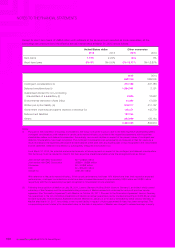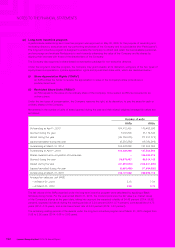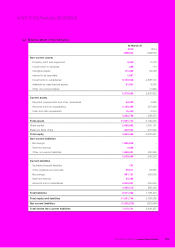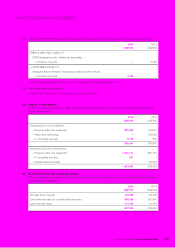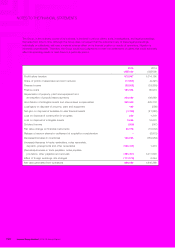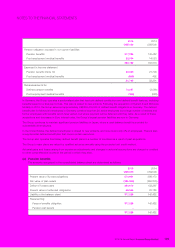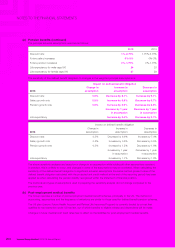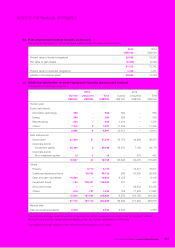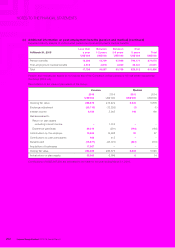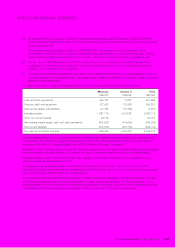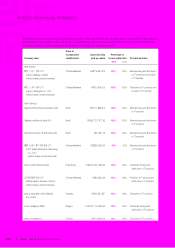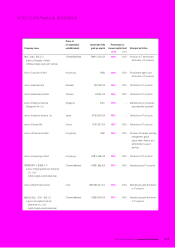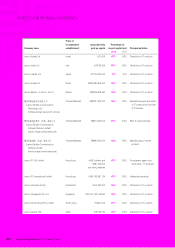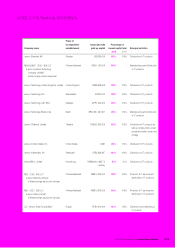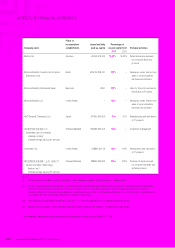Lenovo 2015 Annual Report Download - page 202
Download and view the complete annual report
Please find page 202 of the 2015 Lenovo annual report below. You can navigate through the pages in the report by either clicking on the pages listed below, or by using the keyword search tool below to find specific information within the annual report.
200 Lenovo Group Limited 2014/15 Annual Report
NOTES TO THE FINANCIAL STATEMENTS
35 RETIREMENT BENEFIT OBLIGATIONS (continued)
(a) Pension benefits (continued)
The principal actuarial assumptions used are as follows:
2015 2014
Discount rate 1%-2.75% 1.75%-3.75%
Future salary increases 0%-3% 0%-3%
Future pension increases 0%-1.75% 0%-1.75%
Life expectancy for male aged 60 24 23
Life expectancy for female aged 60 27 29
The sensitivity of the defined benefit obligation to changes in the weighted principal assumptions is:
Impact on defined benefit obligation
2015
Change in
assumption
Increase in
assumption
Decrease in
assumption
Discount rate 0.5% Decrease by 8.1% Increase by 9.1%
Salary growth rate 0.5% Increase by 0.8% Decrease by 0.7%
Pension growth rate 0.5% Increase by 3.0% Decrease by 2.3%
Increase by 1 year
in assumption
Decrease by 1 year
in assumption
Life expectancy Increase by 2.4% Decrease by 2.1%
Impact on defined benefit obligation
2014
Change in
assumption
Increase in
assumption
Decrease in
assumption
Discount rate 0.5% Decrease by 6.6% Increase by 7.4%
Salary growth rate 0.5% Increase by 0.5% Decrease by 0.5%
Pension growth rate 0.5% Increase by 1.2% Decrease by 1.6%
Increase by 1 year
in assumption
Decrease by 1 year
in assumption
Life expectancy Increase by 1.7% Decrease by 1.6%
The above sensitivity analyses are based on a change in an assumption while holding all other assumptions constant.
In practice, this is unlikely to occur, and changes in some of the assumptions may be correlated. When calculating the
sensitivity of the defined benefit obligation to significant actuarial assumptions the same method (present value of the
defined benefit obligation calculated with the projected unit credit method at the end of the reporting period) has been
applied as when calculating the pension liability recognised within the statement of financial position.
The methods and types of assumptions used in preparing the sensitivity analysis did not change compared to the
previous year.
(b) Post-employment medical benefits
The Group operates a number of post-employment medical benefit schemes, principally in the US. The method of
accounting, assumptions and the frequency of valuations are similar to those used for defined benefit pension schemes.
The US plan (Lenovo Future Health Account and Retiree Life Insurance Program) is currently funded by a trust that
qualifies for tax exemption under US tax law, out of which benefits to eligible retirees and dependents will be made.
Changes in future medical cost trend rates has no effect on the liabilities for post-employment medical benefits.


